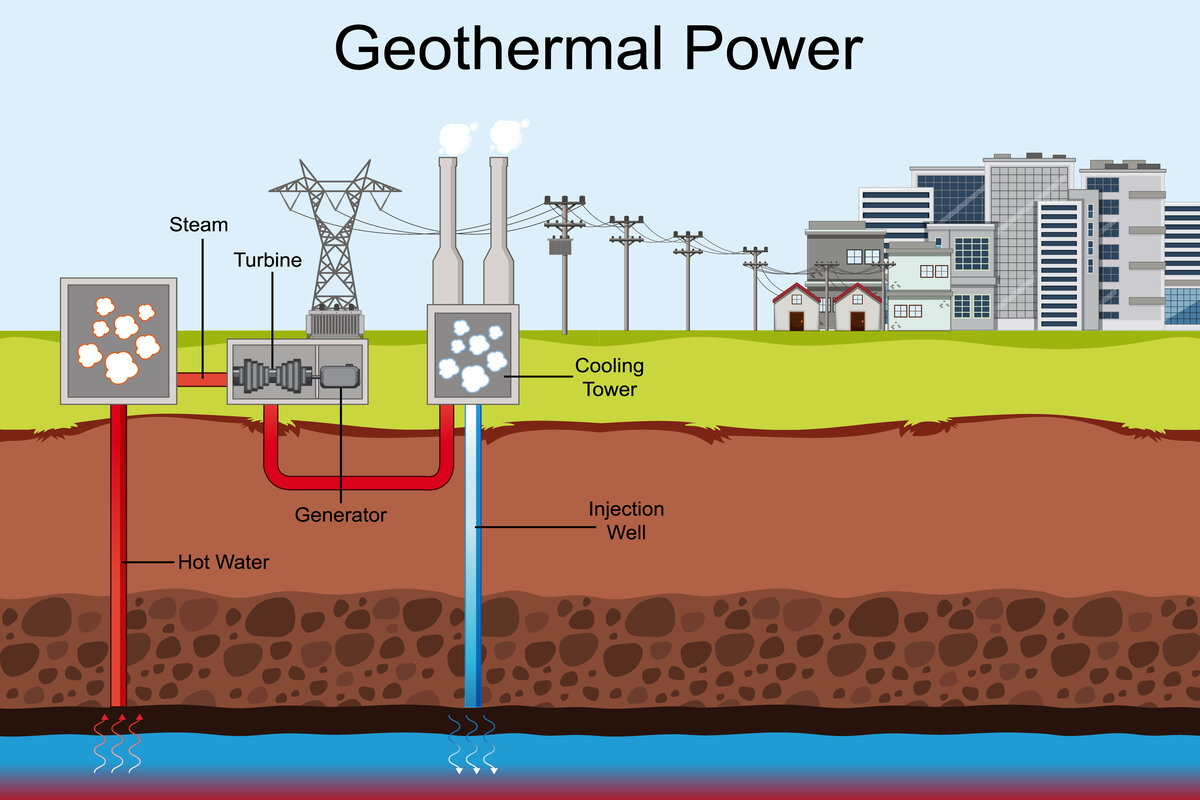What is Geothermal Energy and How Does It Work?

Our homes and businesses in New Zealand are powered by electricity. This electricity is generated through various sources, including renewable sources and non-renewable sources.
What is Renewable Energy?
Renewable energy is created from the earth’s resources, and are materials that are constantly replenished. We can use these resources to generate electricity. Renewable energy sources are solar, wind, geothermal, and hydro power.
What is Non-Renewable Energy?
Non-renewable energy is the opposite of renewable energy and comes from materials that will not be replenished for hundreds if not thousands of years. Fossil fuels are a type of non-renewable energy. One form of fossil fuel is coal which is formed through natural processes such as the decomposition of organic matter. Fossil fuels are considered unhealthy for the environment. So, the energy industry in New Zealand is making strides to focus on renewable energy sources.
Geothermal Energy
Today’s renewable energy spotlight is on geothermal energy.
What is Geothermal Energy?
Geothermal energy is a renewable source of energy that comes from the heat generated within the Earth’s crust. In Greek, geo means “earth” and thermal means “heat.”
Roughly 2,900 kilometres below the Earth’s surface is the hottest part of the planet known as the core. Part of this incredible heat comes from the friction and the gravitational pull that was created when the Earth was formed over 4 billion years ago. However, most of it comes from the decay of radioactive particles!
This radioactive decay is a constant and continuous process, resulting in temperatures higher than 5,000° Celsius. The core’s heat is always rising to the Earth’s surface and heats the rocks beneath.
When rock formations underground are heated to about 700-1,300° C, it becomes magma, which is molten rock and gas. This magma can send heat and steam to the Earth’s surface, which we can capture and turn into energy.
How does Geothermal Energy Work?
To turn this geothermal material into electricity, we must harvest the heat that is generated from a few kilometres below the Earth’s surface. New Zealand has a lot of geological activity and there are many places around the country where you’ll find hot water and steam released through geysers, hot springs, mud pools and steam vents. In Taupo you might notice the Contact Energy geothermal station. We can extract this heat by using geothermal reservoirs such as wells to capture the steam and hot water that comes to the surface. Sometimes, we might need to add measures to bring steam to the surface by injecting water into the wells to create steam.
This steam is then piped straight to the power plants where it is pushed through turbines to make the blades spin. The spinning turbines, fueled by the geothermal energy, generates electricity.
Now that you know where a portion of your power comes from, why don’t you compare your power bill?
Power Compare is designed to help you find the best power bill available to you and save money. Jump on our user-friendly site, type in your address, and filter out your preferences based on your household, and compare the different plans available to you side-by-side. When you find one you like, make the switch! Comparing helps you understand the market, make an informed decision, and save hundreds of dollars across a year.
Or call our friendly Auckland-based team on 0508 226672 for bias-free, obligation-free advice on your power bill.
Further Reading:
Going Green for St Paddy's: Shedding Light on the Benefits of Solar Power

